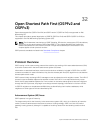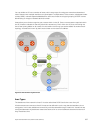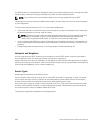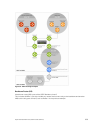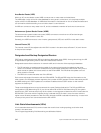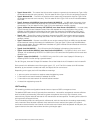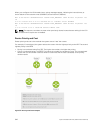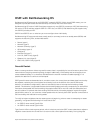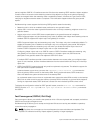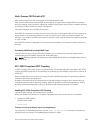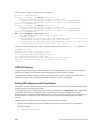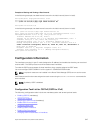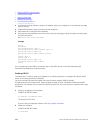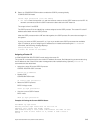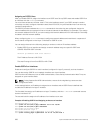OSPF with Dell Networking OS
Dell Networking OS supports up to 10,000 OSPF routes for OSPFv2. Within that 10,000 routes, you can
designate up to 8,000 routes as external and up to 2,000 as inter/intra area routes.
Dell Networking OS version 9.4(0.0) and later support only one OSPFv2 process per VRF. Dell Networking
OS version 9.7(0.0) and later support OSPFv3 in VRF. Also, on OSPFv3, Dell Networking OS supports only
one OSPFv3 process per VRF.
OSPFv2 and OSPFv3 can co-exist but you must configure them individually.
Dell Networking OS supports stub areas, totally stub (no summary) and not so stubby areas (NSSAs) and
supports the following LSAs, as described earlier.
• Router (type 1)
• Network (type 2)
• Network Summary (type 3)
• AS Boundary (type 4)
• LSA(type 5)
• External LSA (type 7)
• Link LSA, OSPFv3 only (type 8)
• Opaque Link-Local (type 9)
• Grace LSA, OSPFv3 only (type 11)
Graceful Restart
When a router goes down without a graceful restart, there is a possibility for loss of access to parts of the
network due to ongoing network topology changes. Additionally, LSA flooding and reconvergence can
cause substantial delays. It is, therefore, desirable that the network maintains a stable topology if it is
possible for data flow to continue uninterrupted.
OSPF graceful restart understands that in a modern router, the control plane and data plane functionality
are separate, restarting the control plane functionality (such as the failover of the active RPM to the
backup in a redundant configuration), does not necessarily have to interrupt the forwarding of data
packets. This behavior is supported because the forwarding tables previously computed by an active RPM
have been downloaded into the forwarding information base (FIB) on the line cards (the data plane) and
are still resident. For packets that have existing FIB/CAM entries, forwarding between ingress and egress
ports/VLANs, and so on, can continue uninterrupted while the control plane OSPF process comes back to
full functionality and rebuilds its routing tables.
To notify its helper neighbors that the restart process is beginning, when a router is attempting to restart
gracefully, it originates the following link-local Grace LSAs:
• An OSPFv2 router sends Type 9 LSAs.
• An OSPFv3 router sends Type 11 LSAs.
Type 9 and 11 LSAs include a grace period, which is the time period an OSPF router advertises to adjacent
neighbor routers as the time to wait for it to return to full control plane functionality. During the grace
Open Shortest Path First (OSPFv2 and OSPFv3)
643




